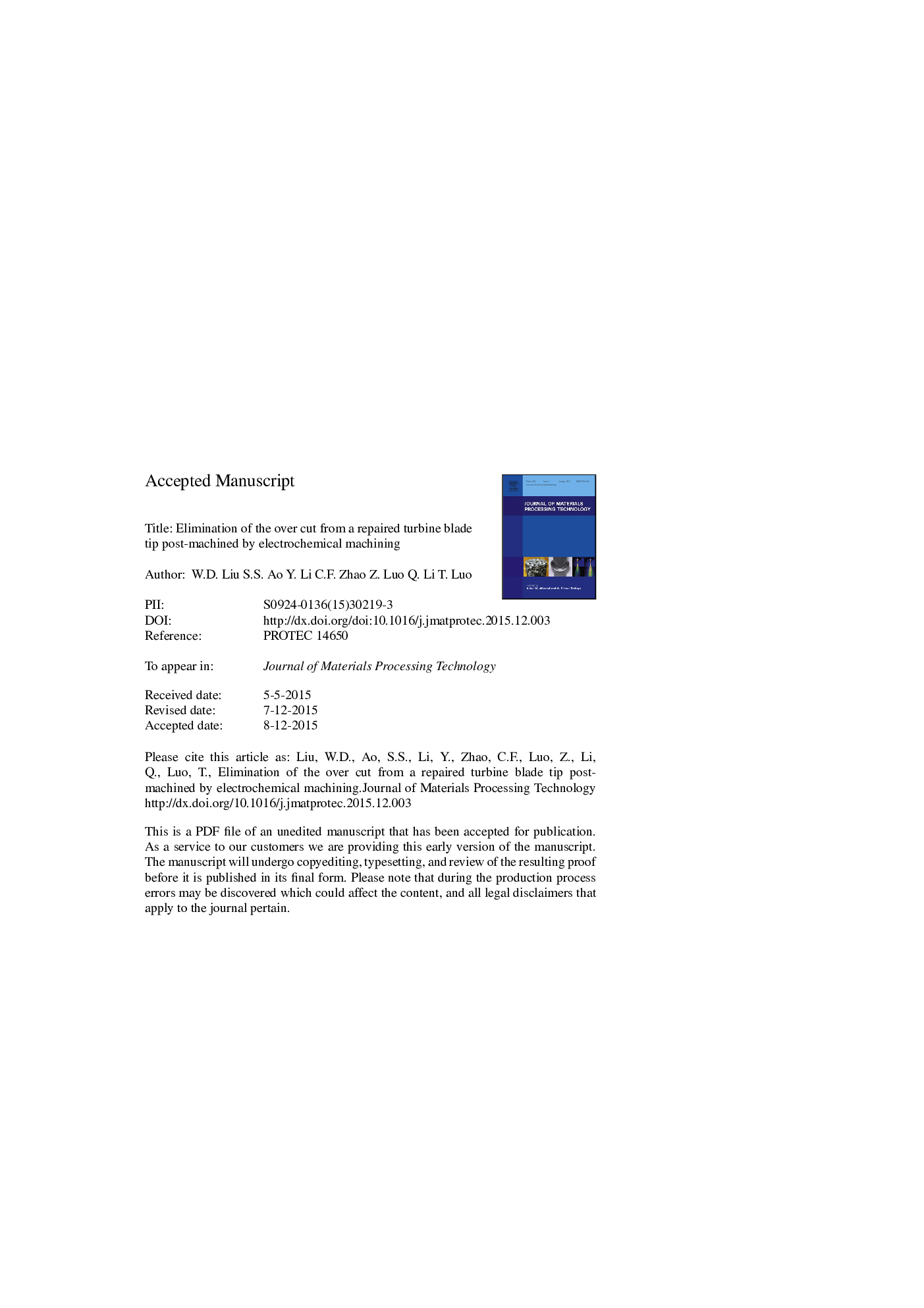| Article ID | Journal | Published Year | Pages | File Type |
|---|---|---|---|---|
| 7176729 | Journal of Materials Processing Technology | 2016 | 43 Pages |
Abstract
With the wide use of high-strength hardened materials in the repair of turbine blade tip, conventional machining processes are reaching limitations owing to poor surface integrity and high tool wear. Electrochemical machining (ECM) offers a potential alternative for the machining of repaired turbine blade tip. However, an over cut phenomenon often occurs in ECM of repaired turbine blade tip with a conventional tool. To overcome this drawback, this paper proposes an analytical tool correction based on the allowance distribution. Simulations were performed to analyze the current density distribution on the workpiece surface and to predict the shape evolution of workpiece. The effect of the use of conventional and corrected tools on workpiece shape was compared experimentally to verify the simulation. The simulation and experimental results illustrated that the corrected tool is helpful in removing the current density peaks and thus eliminating the over cut. Additionally, the effect of the applied voltage and machining time on the machined shape of turbine blade tip using the corrected tool were investigated experimentally. The results revealed that the machined shape of turbine blade tip using corrected tool is mainly determined by the machining time. A too long or too short machining time generates concave or convex shapes respectively, while only the optimum time produces an acceptable shape. Repeating the experiments with optimum parameters showed that turbine blade tip with desired shape and good surface quality can be reliably ECM machined using the corrected tool in batch repair operations.
Keywords
Related Topics
Physical Sciences and Engineering
Engineering
Industrial and Manufacturing Engineering
Authors
W.D. Liu, S.S. Ao, Y. Li, C.F. Zhao, Z. Luo, Q. Li, T. Luo,
